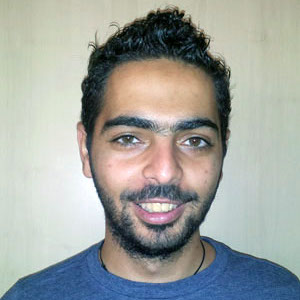During the last forty years, data management systems have grown in scale, complexity, and number of
installations. At the same time, administration of these systems has become very expensive with the
human factor dominating the total cost of ownership. Current trends like cloud computing make this
situation even more problematic for service providers who have to configure and manage thousands of
database nodes.
There has been a significant amount of research addressing this problem by providing autonomic or
self-* features in database systems to support complex administrative tasks like physical database
design, problem diagnosis, and performance tuning. However, new challenges arise from trends like
cloud and cluster computing, virtualization, and Software-as-a-Service (SaaS). A major challenge is
the need to scale self-management capabilities to the level of hundreds to thousands of nodes while
taking economic factors into account.
Autonomic, or self-managing, systems are a promising approach to achieve the goal of systems that
are easier to use and maintain. A system is considered to be autonomic if it possesses the
capabilities to be self-configuring, self-optimizing, self-healing and self-protecting. The aim of
the SMDB workshop is to provide a forum for researchers from both industry and academia to present
and discuss ideas related to self-management and self-organization in data management systems
ranging from classical databases to data stream engines to large-scale cloud environments that
utilize advanced AI, machine learning, and data mining and analysis.
We plan to follow the successful format of previous instances of this workshop: approximately 10
presentations of accepted papers, a keynote address by a well-known speaker and subject matter
expert in self-managing database systems, as well as a panel discussion involving experts from
industry and academia.





| Times are displayed in PDT and UTC. Look up your local times: https://time.is/. | |||||||
|
PDT |
UTC |
Session Chair |
|
||||
|
7:00 |
14:00 |
Herodotos Herodotou |
Session 1 |
Opening and Introductions General Chairs: Panos K. Chrysanthis & Meichun Hsu |
10 min |
||
|
Research Talk 1 |
Performance Models of Data Parallel DAG Workflows for Large Scale Data Analytics Juwei Shi (Microsoft)*; Jiaheng Lu (University of Helsinki) |
25 min |
|||||
|
Research Talk 2 |
Adaptive Query Compilation in Graph Databases Alexander Baumstark (TU Ilmenau)*; Muhammad Attahir Jibril (TU Ilmenau); Kai-Uwe Sattler (TU Ilmenau) |
25 min |
|||||
|
8:00 |
15:00 |
Break |
|||||
|
8:10 |
15:10 |
Yingjun |
Session 2 |
Keynote 1 |
AI's Enormous Potential for Database Simplification Sam Lightstone, CTO AI Strategy, IBM Data and AI |
45 min |
|
|
Keynote 2 |
OtterTune: An Automatic Database Configuration Tuning Service Andy Pavlo, Associate Professor at Carnegie Mellon University, co-founder of OtterTune |
45 min |
|||||
|
9:40 |
16:40 |
Break |
|||||
|
9:50 |
16:50 |
Stefan Manegold |
Session 3 |
Keynote 3 |
Automatic Data Management and Storage Tiering with Oracle Database In-Memory Shasank Chavan, VP of Data and In-Memory Database Technologies at Oracle |
45 min |
|
|
Keynote 4 |
Architectural evolution of Amazon Redshift and its practical usage of Machine Learning. Ippokratis Pandis, Senior Principal Engineer at Amazon Web Services |
45 min |
|||||
|
11:20 |
18:20 |
Break |
|||||
|
11:30 |
18:30 |
Constantinos Costa |
Session 4 |
Research Talk 3 |
Improving Stream Load Balance through Shedding Nikos Katsipoulakis (Amazon Web Services)*; Alexandros Labrinidis (University of Pittsburgh); Panos Chrysanthis (University of Pittsburgh) |
25 min |
|
|
Research Talk 4 |
Towards a Benchmark for Learned Systems Laurent Bindschaedler (MIT)*; Andreas Kipf (MIT); Tim Kraska (MIT); Ryan Marcus (MIT); Umar Farooq Minhas (Microsoft Research) |
25 min |
|||||
|
Closing General Chairs: Panos K. Chrysanthis & Meichun Hsu |
10 min |
||||||
 Sam Lightstone is IBM Chief Technology Officer for AI, IBM Fellow and a Master Inventor in the IBM
Data and AI group. He is also chair of the Data and AI Technical Team, the working group of IBM’s
technical executives in the division. He has been the founder and co-founder of several large-scale
initiatives including AI databases, next generation data warehousing, data virtualization, autonomic
computing for data systems, serverless cloud SQL query, and cloud native database services. He
co-founded the IEEE Data Engineering Workgroup on Self-Managing Database Systems. Sam has more than
65 patents issued and pending and has authored 4 books and over 30 papers. Sam’s books have been
translated into Chinese, Japanese and Spanish. In his spare time he is an avid guitar player and
fencer. His Twitter handle is "samlightstone".
Sam Lightstone is IBM Chief Technology Officer for AI, IBM Fellow and a Master Inventor in the IBM
Data and AI group. He is also chair of the Data and AI Technical Team, the working group of IBM’s
technical executives in the division. He has been the founder and co-founder of several large-scale
initiatives including AI databases, next generation data warehousing, data virtualization, autonomic
computing for data systems, serverless cloud SQL query, and cloud native database services. He
co-founded the IEEE Data Engineering Workgroup on Self-Managing Database Systems. Sam has more than
65 patents issued and pending and has authored 4 books and over 30 papers. Sam’s books have been
translated into Chinese, Japanese and Spanish. In his spare time he is an avid guitar player and
fencer. His Twitter handle is "samlightstone".

Andy Pavlo is an Associate Professor of Databaseology in the Computer Science Department at Carnegie Mellon University. His research interest is in database management systems, specifically main memory systems, self-driving / autonomous architectures, transaction processing systems, and large-scale data analytics. At CMU, he is a member of the Database Group and the Parallel Data Laboratory. He is also the co-founder and CEO of OtterTune
 Shasank Chavan is the Vice President of the Data and In-Memory Technologies group at Oracle. He leads an
amazing team of brilliant engineers in the Database organization who develop customer-facing,
performance-critical features for an In-Memory Columnar Store which, as Larry Ellison proclaimed,
“processes data at ungodly speeds”. His team implements novel SIMD kernels and hardware acceleration
technology for blazing fast columnar data processing, optimized data formats and compression technology
for efficient in-memory storage, algorithms and techniques for fast in-memory join and aggregation
processing, and optimized in-memory data access and storage solutions in general. His team is currently
hyper-focused on leveraging emerging hardware technologies to build Oracle's next-generation, highly
distributed, data storage engine that powers the cloud. Shasank earned his BS/MS in Computer Science at
the University of California, San Diego. He has accumulated 20+ patents over a span of 22 years working
on systems software technology.
Shasank Chavan is the Vice President of the Data and In-Memory Technologies group at Oracle. He leads an
amazing team of brilliant engineers in the Database organization who develop customer-facing,
performance-critical features for an In-Memory Columnar Store which, as Larry Ellison proclaimed,
“processes data at ungodly speeds”. His team implements novel SIMD kernels and hardware acceleration
technology for blazing fast columnar data processing, optimized data formats and compression technology
for efficient in-memory storage, algorithms and techniques for fast in-memory join and aggregation
processing, and optimized in-memory data access and storage solutions in general. His team is currently
hyper-focused on leveraging emerging hardware technologies to build Oracle's next-generation, highly
distributed, data storage engine that powers the cloud. Shasank earned his BS/MS in Computer Science at
the University of California, San Diego. He has accumulated 20+ patents over a span of 22 years working
on systems software technology.
 Ippokratis Pandis is a senior principal engineer at Amazon Web Services, working in Amazon Redshift.
Redshift is Amazon's fully managed, petabyte-scale data warehouse service. Among others, Ippokratis is
the architect of the Spectrum, Concurrency Scaling and DataSharing features of Redshift. Previously,
Ippokratis has held positions as software engineer at Cloudera where he worked on the Impala
SQL-on-Hadoop query engine, and as member of the research staff at the IBM Almaden Research Center,
where he worked on the DB2 BLU product.
Ippokratis received his PhD from the Electrical and Computer Engineering department at Carnegie Mellon
University. He is the recipient of Best Demonstration awards at ICDE 2006 and SIGMOD 2011, and
Test-of-Time award at EDBT 2019. He has served as PC chair of DaMoN 2014, DaMoN 2015, CloudDM 2016 and
HPTS 2019.
Ippokratis Pandis is a senior principal engineer at Amazon Web Services, working in Amazon Redshift.
Redshift is Amazon's fully managed, petabyte-scale data warehouse service. Among others, Ippokratis is
the architect of the Spectrum, Concurrency Scaling and DataSharing features of Redshift. Previously,
Ippokratis has held positions as software engineer at Cloudera where he worked on the Impala
SQL-on-Hadoop query engine, and as member of the research staff at the IBM Almaden Research Center,
where he worked on the DB2 BLU product.
Ippokratis received his PhD from the Electrical and Computer Engineering department at Carnegie Mellon
University. He is the recipient of Best Demonstration awards at ICDE 2006 and SIGMOD 2011, and
Test-of-Time award at EDBT 2019. He has served as PC chair of DaMoN 2014, DaMoN 2015, CloudDM 2016 and
HPTS 2019.